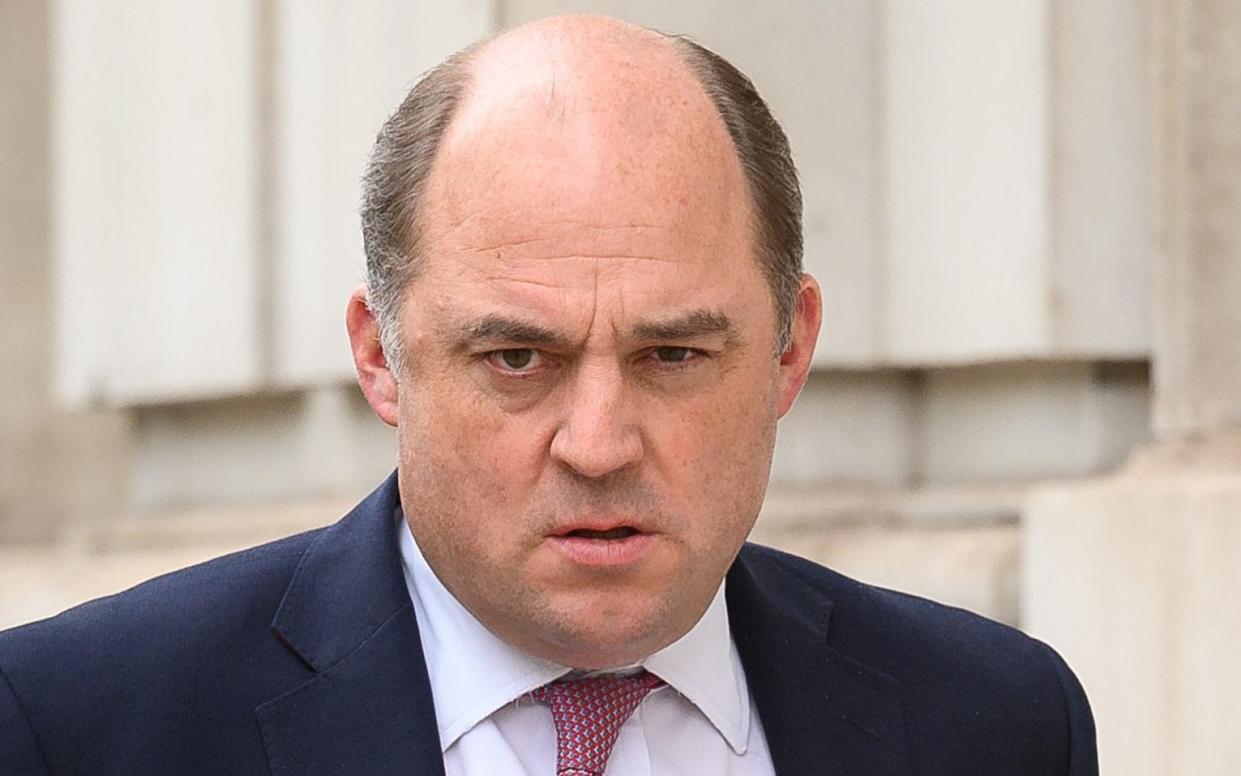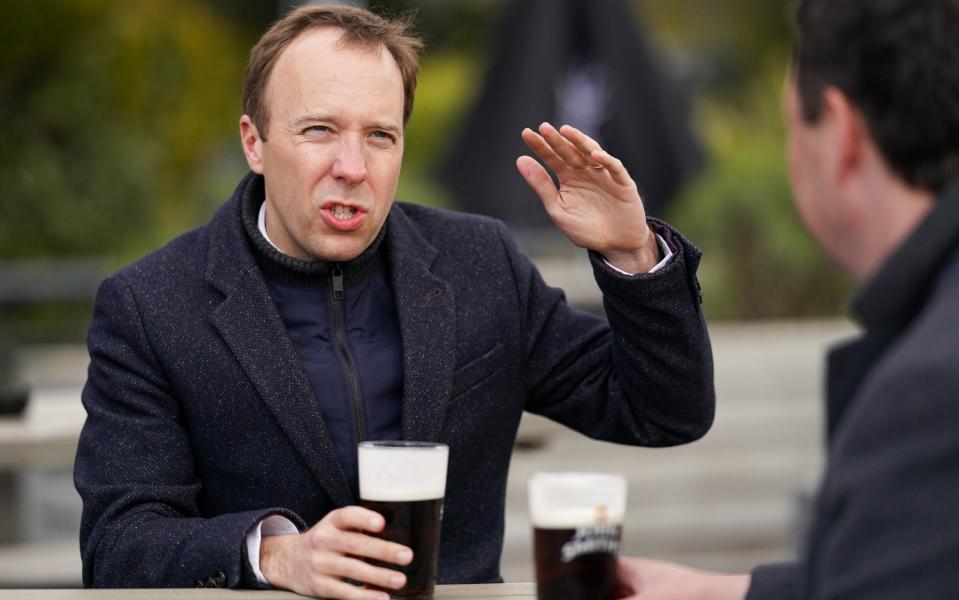Defence Secretary could be high-profile casualty in boundary shake-up

- Oops!Something went wrong.Please try again later.
- Oops!Something went wrong.Please try again later.
- Oops!Something went wrong.Please try again later.
The Defence Secretary looks set to lose his seat under a major shake-up of constituency boundaries, as Conservative MPs on Monday urged Boris Johnson to call an election before the changes can be implemented.
Ben Wallace appears to be the biggest casualty under initial proposals for a redrawing of English seats, which are currently being briefed to MPs by the Boundary Commission for the first time.
Mr Wallace, who represents the North West seat of Wyre and Preston North, is among a small group of MPs whose entire constituencies are at risk of being absorbed in order to rebalance the size of all 650 Parliamentary seats.
Others include Ian Lavery, the former Labour Party chairman under Jeremy Corbyn, whose North East seat of Wansbeck is also being merged with neighbouring constituencies.
Meanwhile, Matt Hancock, the Health Secretary, appears to face having parts of his seat of West Suffolk merged with fellow health minister Jo Churchill’s constituency of Bury St Edmunds.
However, the commission also proposes that Essex and Suffolk gain an additional seat, suggesting that there may be more of a reshuffle than a fight to secure a constituency.
In County Durham, Tony Blair’s former seat of Sedgefield would be renamed and altered, while in London, Sir Keir Starmer’s seat of Holborn and St Pancras would also be renamed Kentish Town and Bloomsbury, with the Labour leader gaining areas which are currently part of Mr Corbyn’s constituency of Islington North.
While the plans will now be subject to a consultation period before revised proposals are published next September and finalised in July 2023, they suggest that Mr Wallace and several other affected MPs could now be forced to find new seats.
In a sign of mounting tensions over the proposals, senior Conservative MPs told The Telegraph on Monday they expected it would lead to widespread calls within the party for Mr Johnson to go to the country before the changes are finalised.
One said that the prospects of an election after they had taken effect were now "close to zero", adding: "MPs will go mad about this. The boundary commission won’t finalise its report until July 2023. They won’t come into force until later that year.
"The most likely date for election is May or June 2023."

Separately, The Telegraph has obtained a leaked email from Mark Spencer, the Government Chief Whip, and Amanda Milling, the Conservative Chairman, which suggests that the party could seek to challenge the proposals.
Sent on May 26, the email urges MPs not to criticise the proposals publicly, stressing that they are only "initial proposals" and "may well change".
It goes on to state: "By working together across the party, a unified position will help us maximise the number of Conservative MPs we elect at the next election and help secure another Conservative Government."
The row comes after earlier proposals to cut the number of seats in Parliament to 600 were shelved following a widespread backlash, with the Government instead pushing forward with plans to ensure the boundaries are updated to take account of population change.
Two new seats will be created in London
Within this agreed framework, the boundary commission for each of the four UK nations is now working up new electoral maps, which are intended to ensure each constituency encompasses between 69,700 and 77,000 voters.
As a result of significant population growth, it also means that England is due to see its number of seats rise to 543, up by 10, while Scotland stands to lose two seats and Wales eight seats.
However, despite England gaining additional representation in Parliament, significant disparities in demographic change means that some areas of the country will see far more drastic change than others.
In London, where 71 of the 73 current constituencies will be altered, two new seats north and south of the River Thames will also be created under the proposed changes.
On Monday, London Conservative MPs complained that several seats that were already marginal could now go to Labour due to significant changes in composition, with several claiming there had been major changes to the seats of Finchley and Golders Green and the City of London and Westminster.
Despite this, Boris Johnson’s London constituency of Uxbridge and South Ruislip is said to have only undergone some "tampering", despite it experiencing major demographic changes in recent years.
The same is said to be the case for the Chancellor Rishi Sunak, who wields a majority of 19,550 in his constituency, Richmond in North Yorkshire.
Lord Hayward, a Tory peer and elections expert, has also stated that he believes the changes, when looked at UK-wide, would have handed the Conservatives an additional five-10 seats at the last election.
However, multiple sources who have seen the plans for Lancashire have told The Telegraph that Mr Wallace’s constituency is due to be absorbed into four neighbouring constituencies: Fylde, Preston, Lancaster and Ribble Valley.
He is believed to be the only senior minister in Government who faces losing their constituency.
A spokesman for Mr Wallace declined to comment when approached on Monday.

